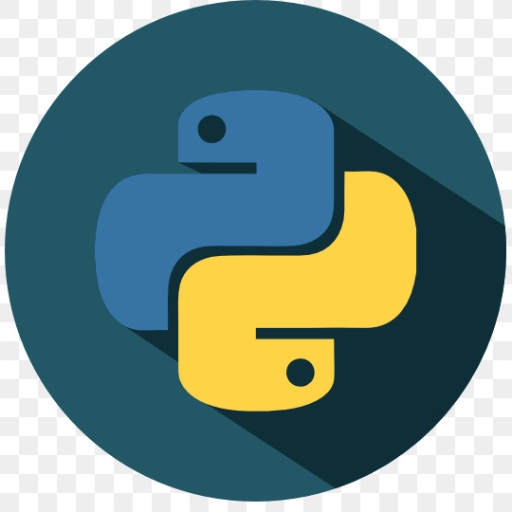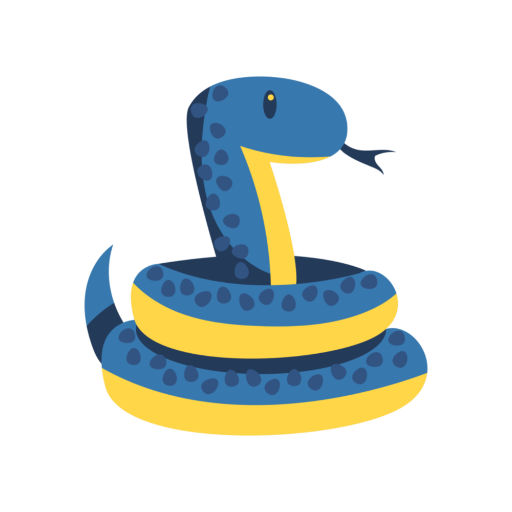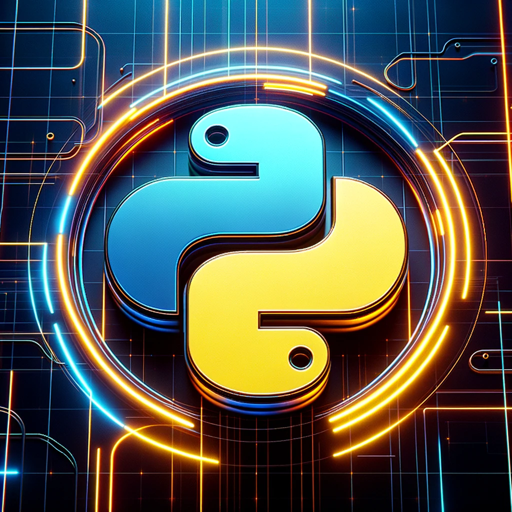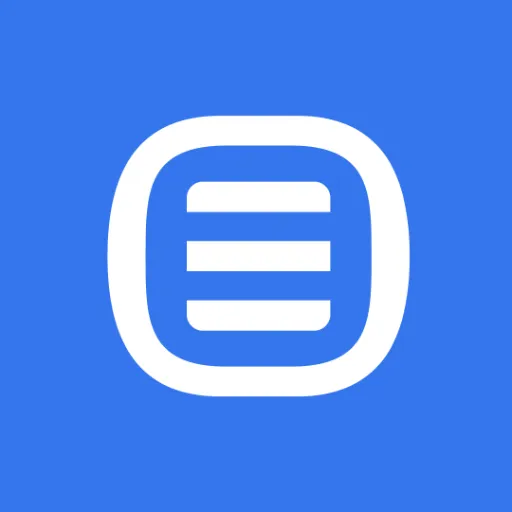Python-AI-powered Python assistance
Your AI partner for Python programming
How do I fix this Python error?
Can you help write a function for this?
Explain how this Python concept works.
Suggest a better way to write this code.
Related Tools
Load More
Learn: Python
First steps of learning Python

Python Code Expert
Develop Python applications that are efficient, maintainable, testable, performant, and robust. Excels at OOP design, error handling, documentation, logging, and much more. Includes unit tests written in pytest for all code snippets.
Python Coding Companion
Assists in creating and understanding python applications and scripts.

Python hacker
Autonomous Python hacker expert, handling coding tasks without user input.

Python Tutor
Concise, example-focused Python programming tutor for beginners to intermediates.

Python Expert
Practical Python tutor with a focus on real-world applications and hands-on learning with projects.
20.0 / 5 (200 votes)
Introduction to Python
Python is a high-level, interpreted programming language known for its readability and simplicity. It was created by Guido van Rossum and first released in 1991. Python's design philosophy emphasizes code readability and allows programmers to express concepts in fewer lines of code compared to languages like C++ or Java. Its syntax is clean and easy to learn, making it an excellent choice for beginners, yet powerful enough for experienced developers. Python supports multiple programming paradigms, including procedural, object-oriented, and functional programming. It is widely used in various fields such as web development, data analysis, artificial intelligence, scientific computing, and automation. For example, in a scenario where a data analyst needs to process and analyze a large dataset, Python can be used with libraries like pandas and NumPy to manipulate the data efficiently. Python's readability allows for quick iteration and collaboration with other team members who may not be as experienced with programming.

Main Functions of Python
Web Development
Example
Using Django or Flask to create web applications.
Scenario
A startup company wants to build a web application to offer their services online. By using Django, a high-level Python web framework, they can quickly develop a robust application with built-in features like authentication, form handling, and database management.
Data Analysis and Visualization
Example
Utilizing pandas for data manipulation and Matplotlib or Seaborn for data visualization.
Scenario
A marketing team needs to analyze customer data to identify trends and insights. By using pandas, they can clean and process the data efficiently. With Matplotlib or Seaborn, they can create visualizations like bar charts and scatter plots to present their findings in a clear and impactful manner.
Machine Learning and Artificial Intelligence
Example
Implementing machine learning models with scikit-learn or deep learning models with TensorFlow or PyTorch.
Scenario
A healthcare company wants to develop a predictive model to diagnose diseases from medical images. By using TensorFlow, a comprehensive open-source platform for machine learning, they can build and train deep learning models to achieve high accuracy in image classification tasks.
Ideal Users of Python
Beginners and Students
Python's simple and readable syntax makes it an ideal language for beginners and students learning programming. The language provides a gentle learning curve and extensive community support, making it easier for new programmers to grasp fundamental concepts and start building projects quickly.
Data Scientists and Analysts
Python is a preferred language for data scientists and analysts due to its powerful libraries for data manipulation, analysis, and visualization. Tools like pandas, NumPy, and Matplotlib enable data professionals to handle large datasets, perform complex analyses, and create insightful visualizations efficiently.

How to Use Python
Step 1
Visit aichatonline.org for a free trial without login, also no need for ChatGPT Plus.
Step 2
Install Python on your local machine. Visit the official Python website (python.org) and download the latest version suitable for your operating system. Follow the installation instructions provided.
Step 3
Set up a development environment. This can be done by installing an Integrated Development Environment (IDE) such as PyCharm, VS Code, or using a simple text editor like Sublime Text or Notepad++.
Step 4
Familiarize yourself with Python syntax and basic concepts. Start with variables, data types, control structures, functions, and modules. Utilize online tutorials, documentation, and courses to build a strong foundation.
Step 5
Begin working on small projects or scripts to apply your knowledge. Use Python's extensive libraries and frameworks to develop applications, automate tasks, or analyze data. Participate in coding challenges and contribute to open-source projects for continuous learning.
Try other advanced and practical GPTs
Python
AI-powered Python development tool

Python
AI-powered Tool for Python Mastery

画像アイデアを考える君
AI-powered image idea generator.

无限星球模拟器
Explore planets with AI-powered simulations

足球赛事分析师
AI-Powered Football Betting Insights.

Flash Card Creator
AI-powered Flash Cards for Smarter Learning

Python
AI-powered tool for Python coding

Jail Breakinator 2.0
AI-Powered Creativity Unleashed

Jailbreak Me
Unlock the AI, Defy the Code!
Persona Creator
AI-powered buyer persona creation.

Legal Case Brief Assistant
AI-powered tool for effortless case briefing

Brief Bot
AI-powered clarity, always brief.

- Data Analysis
- Automation
- Web Development
- Machine Learning
- Scripting
Python Q&A
What is Python used for?
Python is a versatile programming language used for web development, data analysis, artificial intelligence, machine learning, scientific computing, automation, and more. Its simplicity and readability make it popular among developers and researchers.
How can I install Python packages?
You can install Python packages using the pip tool. Open your terminal or command prompt and run `pip install package_name`. Ensure you have Python and pip installed on your system. You can also use virtual environments to manage dependencies for different projects.
What are some popular Python libraries?
Popular Python libraries include NumPy for numerical computing, pandas for data manipulation and analysis, Matplotlib and Seaborn for data visualization, TensorFlow and PyTorch for machine learning, and Django and Flask for web development.
How do I read and write files in Python?
You can read and write files using the built-in `open()` function. To read a file, use `with open('file.txt', 'r') as file:` and to write to a file, use `with open('file.txt', 'w') as file:`. Always close the file after operations, or use the `with` statement for automatic handling.
How do I debug Python code?
Debugging Python code can be done using print statements, logging, or using debugging tools like pdb, the built-in debugger. IDEs like PyCharm and VS Code also offer advanced debugging features, allowing you to set breakpoints, inspect variables, and step through code.